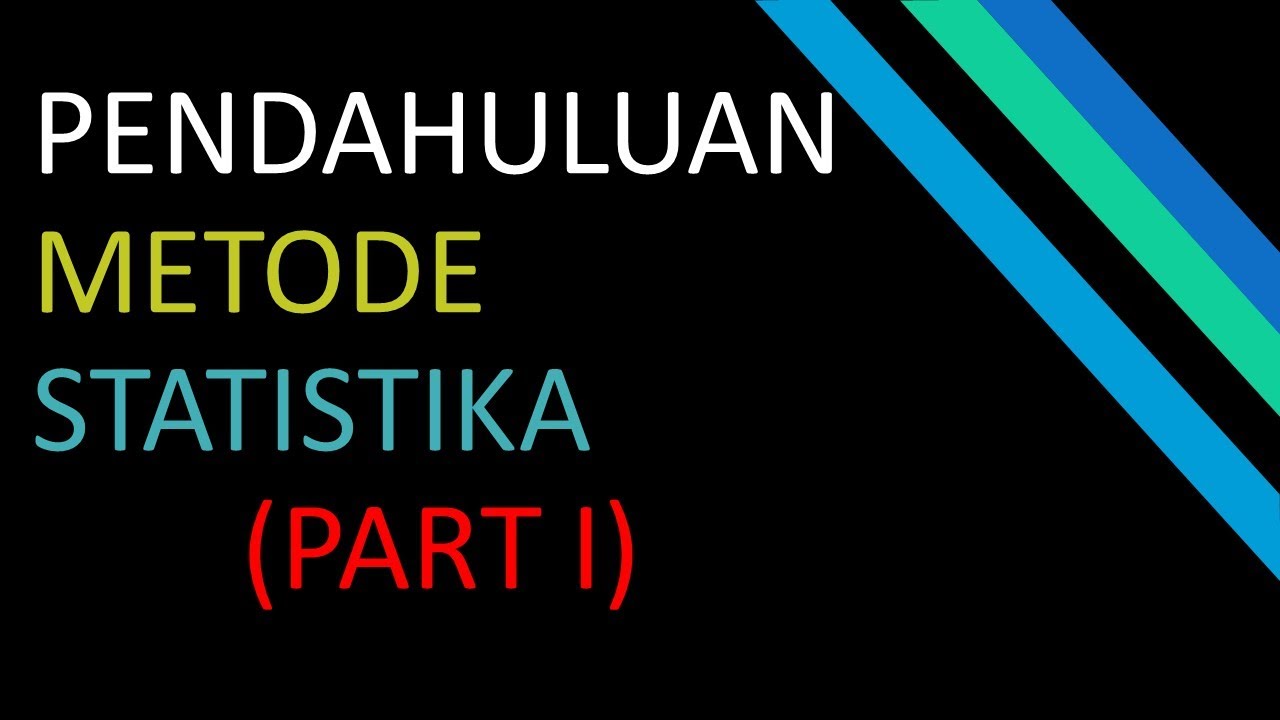Data Collection and Presentation | Statistics
Summary
TLDRThis video delves into the crucial aspects of data collection and presentation in statistics. It distinguishes between primary and secondary data, detailing methods like direct experiments, interviews, surveys, and observations for gathering primary data. The script also emphasizes the importance of proper citation when using secondary data. For data presentation, it outlines textual, tabular, and graphical methods, including frequency distribution tables and various graphs like histograms, bar graphs, line graphs, and pie charts, to effectively communicate data insights.
Takeaways
- 🔍 Data collection is essential for statistics and involves gathering primary (first-hand) and secondary (existing) data.
- 🧪 Primary data collection methods include direct experiments, interviews, surveys, observations, and registrations.
- 📊 Tools for data collection can range from experiment logs and interview guides to attendance sheets.
- 📚 Secondary data is borrowed from other researchers and requires proper citation to credit the original source.
- ✍️ Data presentation involves transforming raw data into formats that are understandable and accessible to an audience.
- 📝 Textual presentation of data involves using narrative and paragraphs to describe the data.
- 📋 Tabular presentation, such as frequency distribution tables (FDT), organizes data into classes and frequencies for easy analysis.
- 📊 Graphical methods like histograms, bar graphs, line graphs, and pie charts provide visual representations of data for quick understanding.
- 📈 Histograms are used for quantitative data and show continuous data flow without gaps between bars.
- 📊 Bar graphs are suitable for categorical data, allowing gaps between bars to represent different categories.
- 📈 Line graphs, also known as time series, depict data trends over time, highlighting patterns and the steepness of data changes.
- 🍕 Pie charts illustrate the proportion of components that make up a whole, useful for showing parts of a total like sales or budget allocations.
Q & A
What are the two main types of data discussed in the video?
-The two main types of data discussed in the video are primary data and secondary data. Primary data refers to data collected by the researchers themselves, while secondary data comes from other researchers, which may include published or unpublished materials.
What is an example of a tool used for collecting primary data through direct experiment?
-An example of a tool used for collecting primary data through direct experiment is an experiment log or observation log, which is used to record observations and results during the experiment.
How is an interview guide defined in the context of the video?
-An interview guide, as defined in the video, is an outline of the topics to be discussed with an interviewee. It may contain questions or simple topics that serve as the flow of the interview.
What is the purpose of a survey in data collection?
-A survey is used for collecting primary data through self-administered questionnaires, which can be in the form of checklists or rating scales distributed to respondents to gather their perceptions or data.
Can you explain the process of creating a frequency distribution table (FDT) for qualitative data?
-To create an FDT for qualitative data, list the different categories or responses in the first column as row headers, and then count the frequency or number of occurrences for each category, placing these counts in the corresponding row.
What are the common parts of a statistical table?
-The common parts of a statistical table include the table number and title, column headers, row headers, and the body, which is the intersection of rows and columns containing the data.
How does a histogram differ from a bar graph in terms of data representation?
-A histogram represents quantitative data and does not have gaps between the rectangles, showing a continuous flow of data. In contrast, a bar graph represents categorical or qualitative data and allows gaps between the bars, as these represent different categories.
What is the significance of the slope in a line graph?
-The slope of a line graph indicates the rate of change in the data over time. A steep slope signifies a rapid increase or decrease, while a gentle slope indicates a slower change.
Why is a pie graph used for data presentation?
-A pie graph is used to show how different components make up a whole. It is effective for displaying data that can be divided into subparts, such as the allocation of resources or the composition of sales.
What are the three main methods of data presentation mentioned in the video?
-The three main methods of data presentation mentioned in the video are textual, tabular, and graphical methods. Textual is used for narratives, tabular for key points, and graphical for audience-friendly visual representations.
Outlines

Этот раздел доступен только подписчикам платных тарифов. Пожалуйста, перейдите на платный тариф для доступа.
Перейти на платный тарифMindmap

Этот раздел доступен только подписчикам платных тарифов. Пожалуйста, перейдите на платный тариф для доступа.
Перейти на платный тарифKeywords

Этот раздел доступен только подписчикам платных тарифов. Пожалуйста, перейдите на платный тариф для доступа.
Перейти на платный тарифHighlights

Этот раздел доступен только подписчикам платных тарифов. Пожалуйста, перейдите на платный тариф для доступа.
Перейти на платный тарифTranscripts

Этот раздел доступен только подписчикам платных тарифов. Пожалуйста, перейдите на платный тариф для доступа.
Перейти на платный тарифПосмотреть больше похожих видео

SEJARAH DAN PENGERTIAN STATISTIK - STATISTIK DESKRIPTIF | BAB 1

ENGINEERING DATA ANALYSIS LESSON 1 TYPES OF DATA

Pendahuluan Metode Penelitian Part I

Statistika Matematika Kelas 12 • Part 1: Pengertian Statistika dan Jenis-Jenis Data

Data Management

Statistika • Part 2: Metode Pengumpulan Data dan Pengelompokan Data Tunggal
5.0 / 5 (0 votes)
